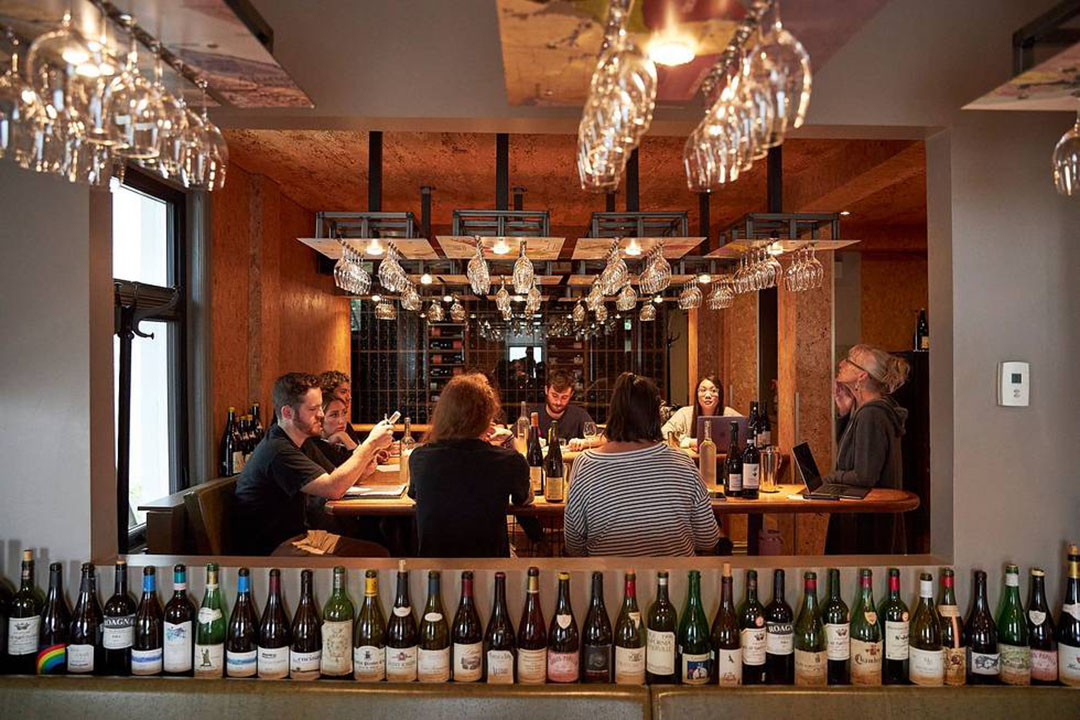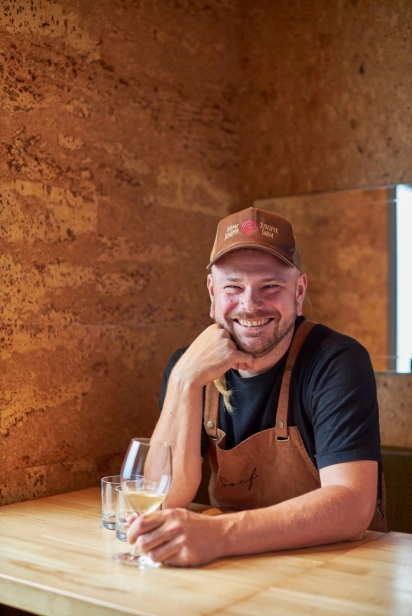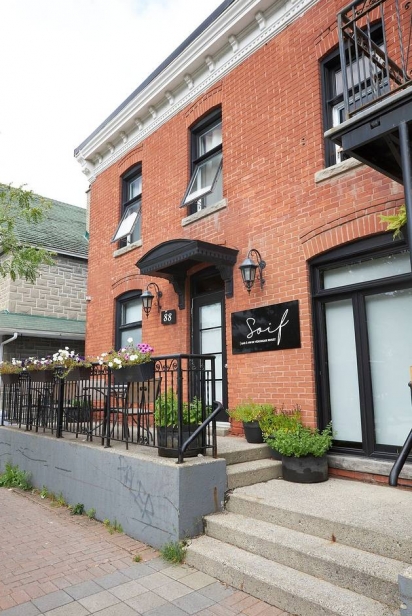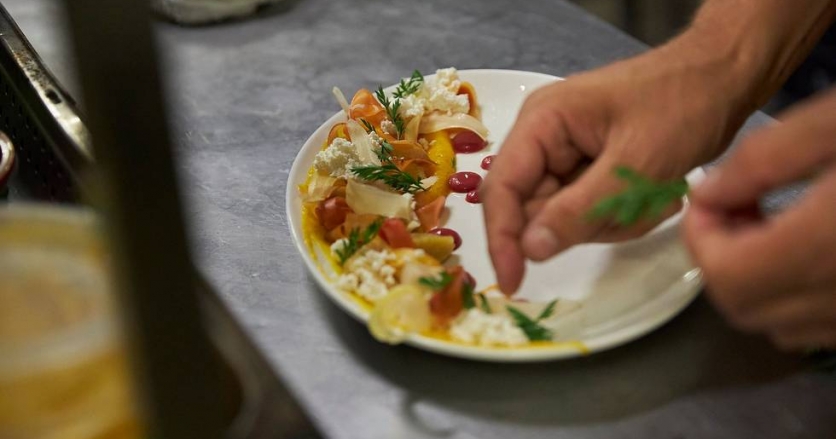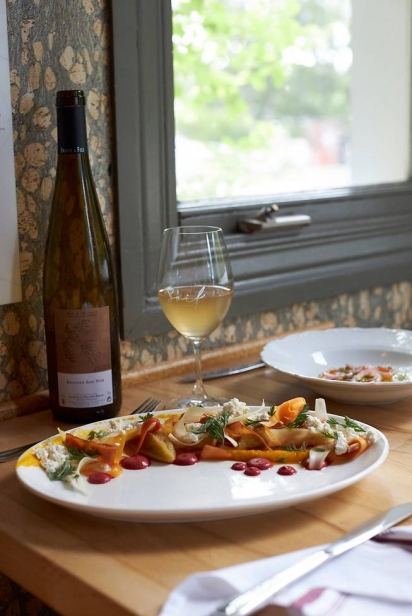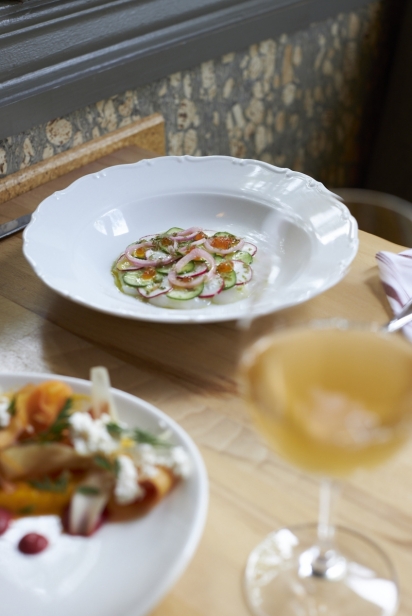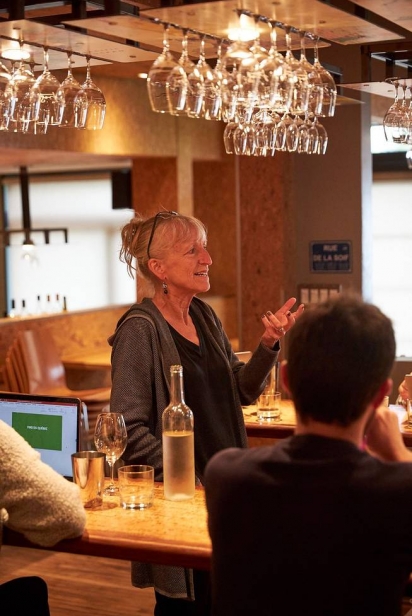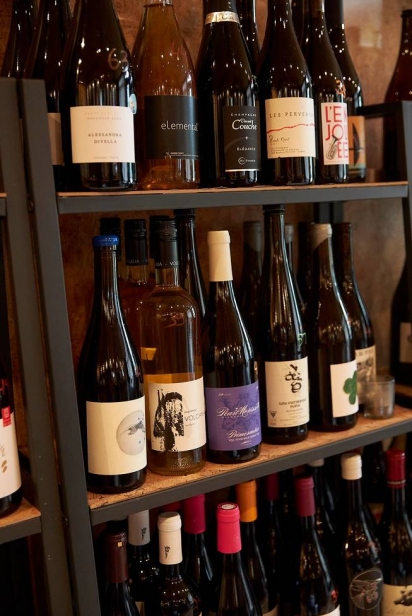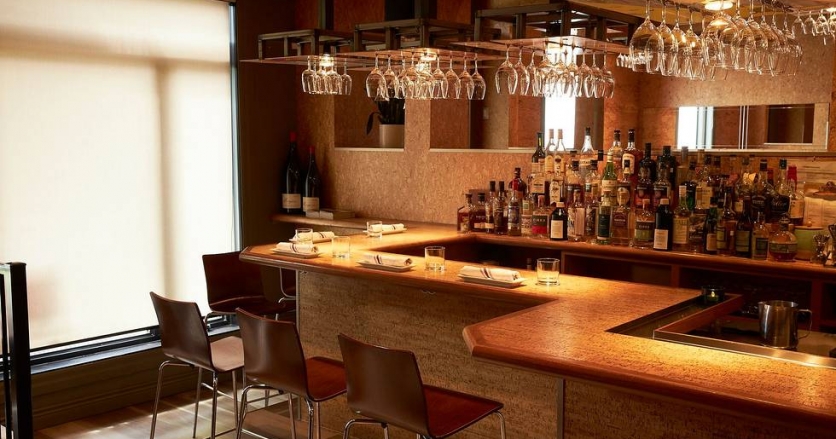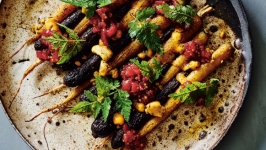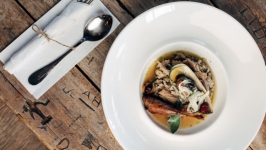'When I got my chance, I went for it'
From Subway to Soif — that’s the trajectory Erik Brooman’s culinary career has taken so far. And one mustn’t forget his stint as chef de partie at Montreal’s acclaimed Joe Beef, after which he went to The Keg Steakhouse, a chain that has excellent health benefits that he wanted to access at the time.
By the time Brooman was 16, he had moved on from Subway to washing dishes at a now-closed pub in the Kanata Centrum. Soon after, he moved on to Fil’s Diner as a dishwasher and two weeks after he started, when one of the line cooks left, he was offered that position.
“I kind of always looked up to the cooks so when I got my chance, I went for it,” the 33-year-old chef says.
He started dabbling in fine dining when he joined the kitchen of Back Lane, the now-closed but once popular locally owned eatery in Hintonburg.
“That’s the one that really got me to where I am today,” Brooman says. “I started off as a line cook and then the chef ended up leaving so my buddy and I took over as chefs de cuisine.”
Brooman says Back Lane may have arrived in Hintonburg too early in the neighbourhood’s renaissance because it closed eventually, leaving him to find a job. But once again, he landed on his feet as a sous-chef at John Szavas’ Fauna. He worked there for three years before heading to Montreal to join the kitchen staff at Joe Beef.
“That was intense,” Brooman says. “It’s non-stop from the moment you get there till the moment you leave.
Everything needs to be right and if it’s not right, you do it again. It’s a lot of work.” In the Montreal kitchen, he worked in the meats and sauce station and did nose-to-tail butchery with the meat and fish. He was there for two years before leaving for The Keg gig.
“I hadn’t been to the dentist in a while,” he says with a laugh. “And they have really good health coverage.”
While he was at The Keg, he joined Joe Beef and Maison Publique alumni doing McKiernan Luncheonette’s catering and he also worked at Darling, a restaurant on the plateau. He was busy juggling these three jobs when COVID hit and he was out of work completely. He returned to Ottawa to live with his dad because he wasn’t working. Soon after, though, he was back on the job, having joined the team at Les Vilains Garçons, a (now-closed) restaurant, butcher shop and food truck.
Somewhere along the way, the Stittsville native had enrolled in the culinary program at Algonquin College, but after eight years of working in professional kitchens, he found he was putting more into his studies than he was getting out, so he left after one semester of the two-year diploma program.
The Dish
The dish Brooman presents to edible Ottawa as a plate that represents his culinary approach is a love letter to carrots, and a work of art. He says it represents him because it showcases and elevates a simple vegetable.
“When I get good vegetables, I love to showcase them,” he says. “So we’ve got tricolour carrots from Ferme Pleine Lune and the whole point is just to set up one ingredient and present it in different ways.”
By “different ways,” he means a staggering nine ways. He purées the purple carrot with fennel; presents the orange carrots as a tagine purée and whips the yellow carrots into a coriander purée. He poaches purple carrots in whey and slices them into ribbons, pickles and slices orange carrots, and ribbon-grates the yellow carrots raw. Then he makes carrot oil, carrot ricotta and uses carrot tops for garnish. The plate is a symphony of colour, with the raw carrot tops punctuating the oranges, pinkish purples and yellows.
“It’s a very colourful plate,” Brooman says as he deftly prepares it in Soif’s tight kitchen, surrounded by his pastry chef, a prep cook and a dishwasher. “Every bite is a little different because each flavour has a different place on the plate, but every bite just works so well together. It's really fun.”
The dish went on the menu as carrots started to be available from the farm in Low and he planned to keep it on for at least the month of September.
“I’ll keep it on the menu as long as the carrots are still really fresh,” he says.
Because he also wants to showcase seafood — and because Soif’s menu is made up of two handfuls of smartly curated small plates — Brooman also puts together a scallop dish. Made from Iles-de-la-Madeleine scallops, buttermilk aguachile, thinly sliced cucumber, thinly sliced radish and topped with salmon roe and lime-pickled shallots, it, too, is an artful plate.
Hyper local
Brooman is inspired by local producers and tries as much as possible to make sure everything on his menu comes from Quebec. He buys produce from Ferme Pleine Lune, Ferme L’eau du ruisseau, Juniper Farms and Ottawa’s Rideau Pines Farm. His mushrooms come from Le Coprin and Heartee Foods, the container mushroom producer in Ottawa.
Soif is a member of Fourchette Bleue, an organization that promotes little-known and under-used marine species in the St. Lawrence Seaway in an effort to ensure sustainability and biodiversity protection. The Soif menu includes blue fork icons on every dish that has a Fourchette Bleue ingredient. That would include, for example, the dried green sea lettuce that the chef scatters over the top of the scallop dish. The scallops are also a Fourchette Bleue product.
“I get as much seafood as I can from la Fourchette Bleue,” Brooman says of his menu which, in September, included fish brandade, popcorn shrimp and Arctic char.
As he surveys the menu, he notes that the radish, cucumber and the ingredients in the aguachile are all locally grown while the salmon roe is from British Columbia.
The late-summer and early fall harvest is a golden time for chefs and he says “there’s very little on the menu that isn’t local. That includes the charcuterie and the foie gras terrine, made from Mariposa Farm’s products.
Mentors and inspirations
When it comes to his influences, Brooman credits Les Vilains Garcons’ chef Romain Riva with helping him expand his creativity. “That’s because the menu changes so, so much — like, pretty much every day — and we rewrote it every morning. So being able to think on the fly and switch it up as needed, [was essential.]”
At Fauna, he says he learned precision from chef Jon Szavas — “how to be on point and do everything with fine cuts.”
The Keg was the busiest restaurant he’d ever worked at so he learned how to deal with volume there. While The Keg might serve 600 on a busy night, a busy night for Joe Beef is 120 people. That said, the attention to detail Joe Beef demanded for those 120 diners also made the work rigorous.
His own approach to a plate is to start with the local ingredients and then make sure he balances textures and flavours.
“You can’t have a plate that has all the same mouthfeel,” he says, “because it’s either mushy or too hard. So you want to balance that a bit. So with the carrot dish, you have the raw carrot to give a crunch and with the scallops, you have the radish, while the cucumber is a little bit softer.”
Post-COVID kitchen
As with many fine-dining kitchens post-pandemic, Soif has a less punishing schedule than before the world shut down in 2020. It’s open five days a week — closed Sundays and Mondays — and each kitchen person works four days a week only. That said, they still get their 40 hours in over four 10-hour days.
When he was working at Back Lane restaurant about seven years ago, he worked five days a week and “lots of hours. “I wish I worked four days a week back then.”
Brooman says he’s also seen changes in the dining scene in the National Capital Region.
“What used to be considered fancy 10 years ago is kind of standard now,” he says. “I’d say it’s evolved. There aren’t very many white tablecloths around anymore. It’s a lot more relaxed — even in the super-nice places. Servers are actually spending time with the guests and being part of the guest experience.”
Soif Bar à vin
88 Montcalm St., Gatineau
soifbaravin.ca | 819.600.7643 | @soifbaravin


